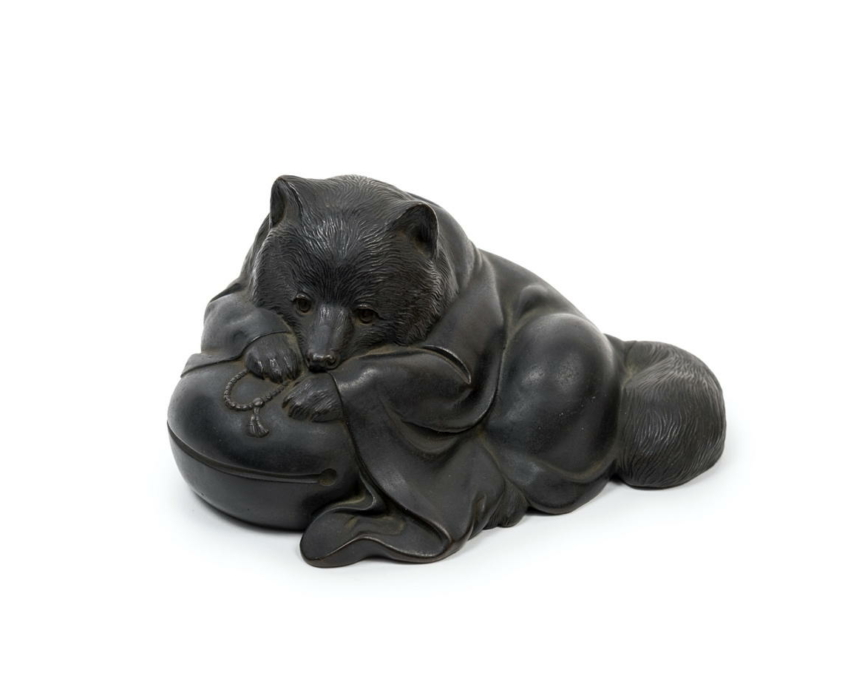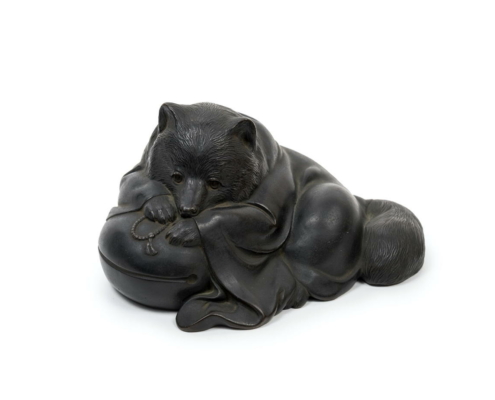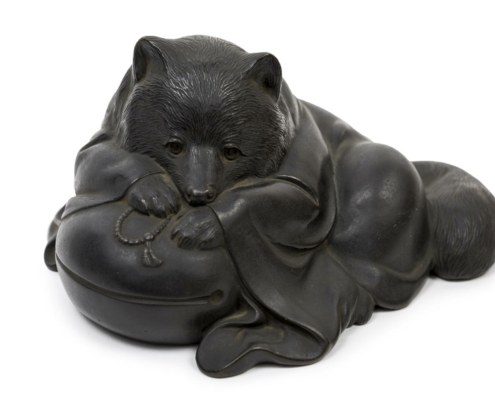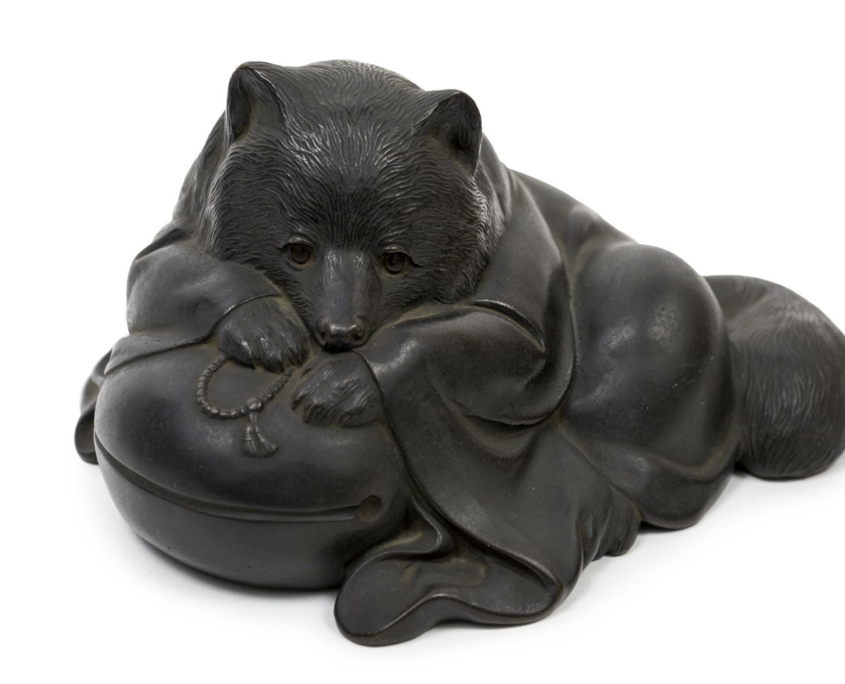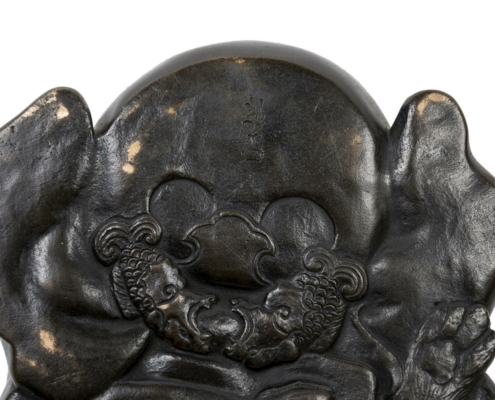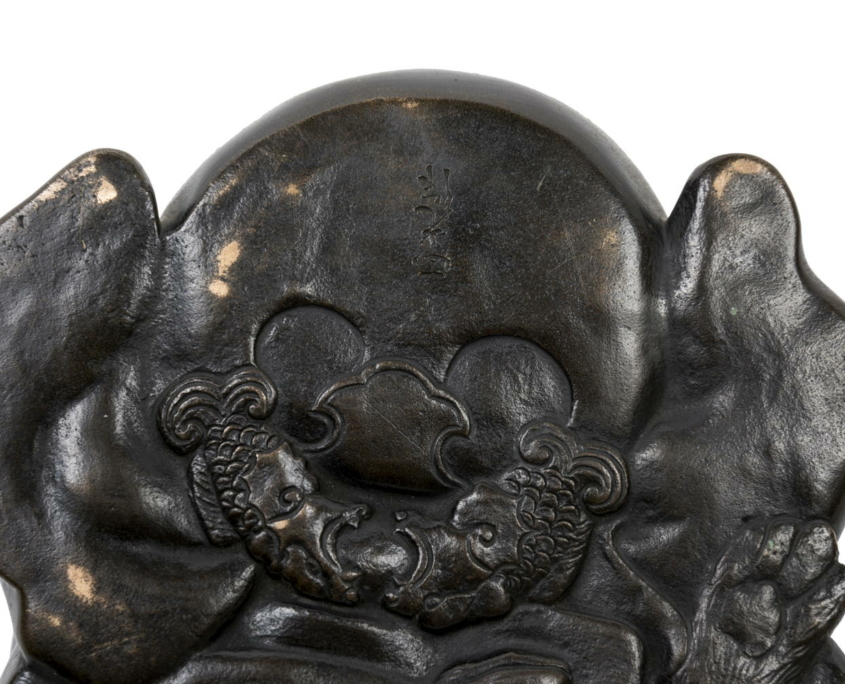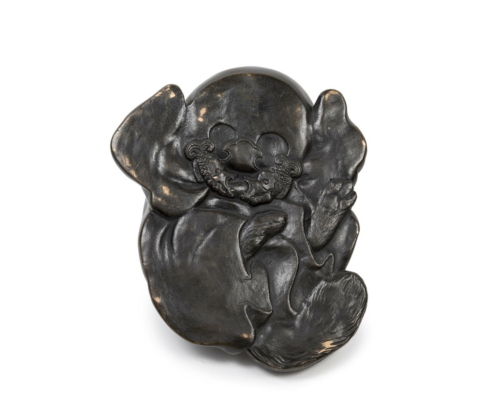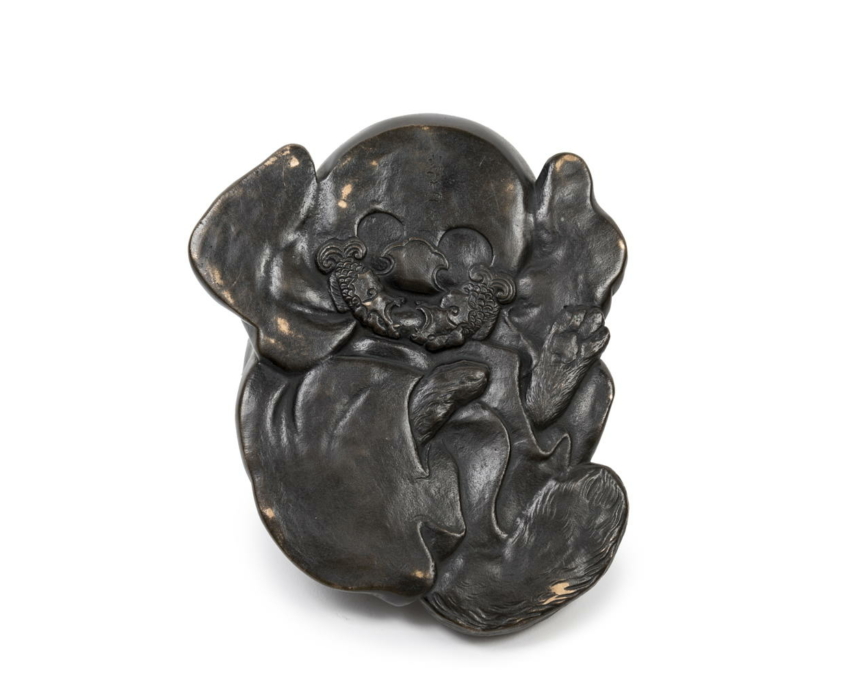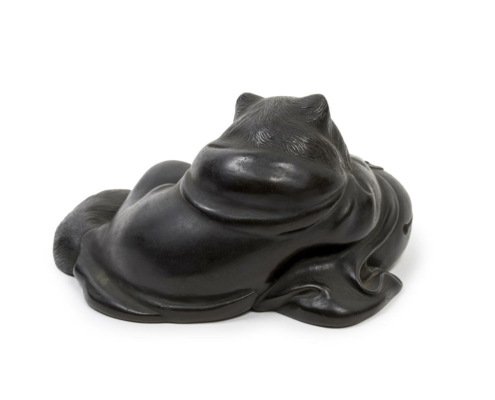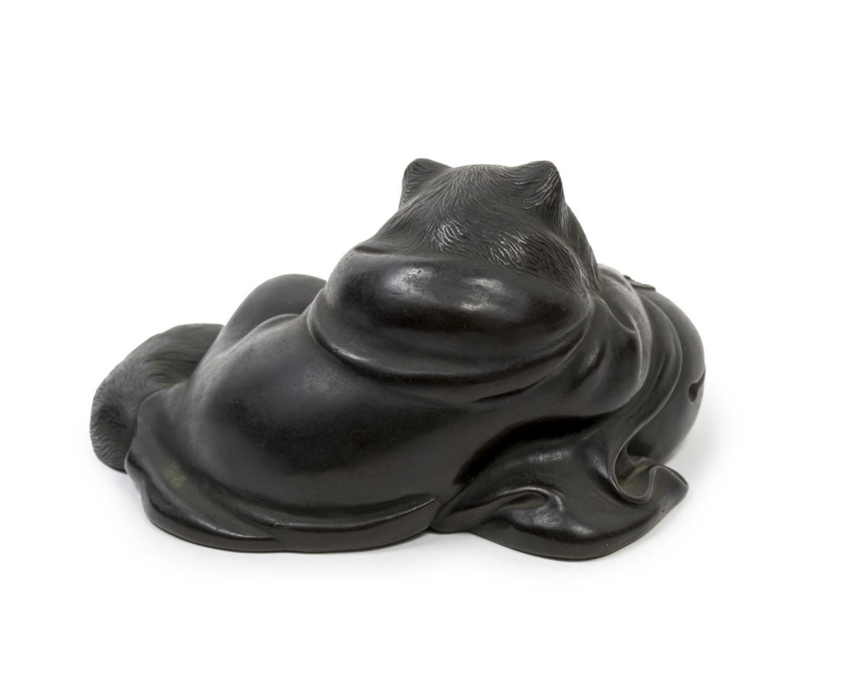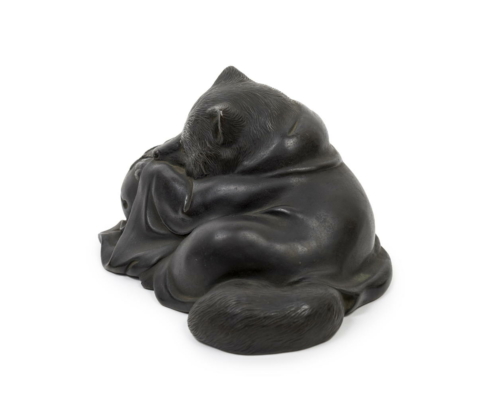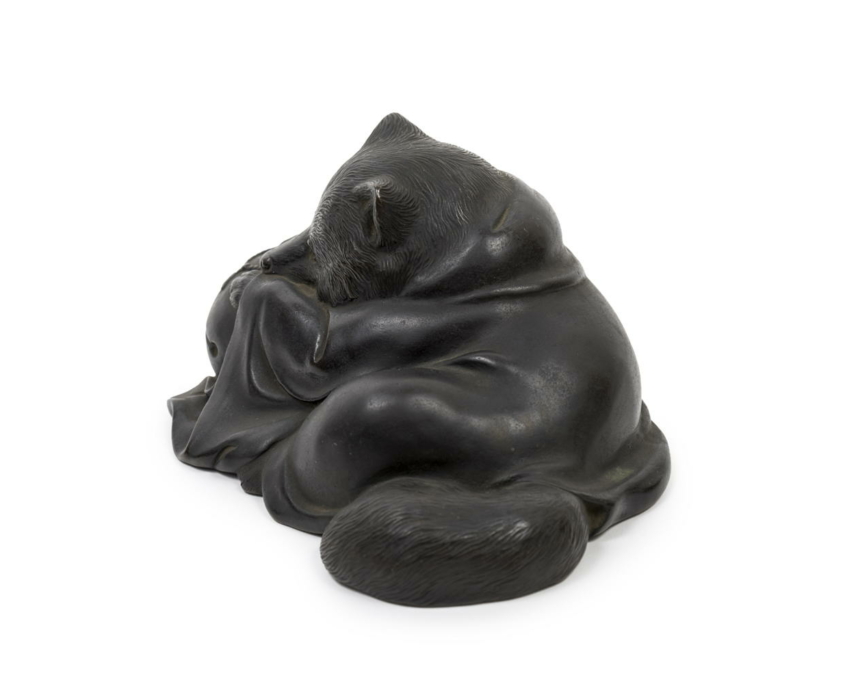BRONZE TANUKI
Reference: 2023-1122
Japanese bronze sculpture of a tanuki. It represented as a Buddhist priest, wrapped in a cloak and lying on a mokugyo (a percussion instrument made of a fish-shaped wooden block and a stick, used to accompany the recitation of sutras).
The tanuki (raccoon dog) is a legendary Japanese animal with magical powers and can transform itself. Mischievous, It uses its long tail to curl up, hide or to confuse its enemies.
Inscription underneath “made by Masamitsu” (正光作). It could be Yamashita Josetsu (山下如雪) because of his elaborate style. He was a student of Ôshima Jôn (1858-1940, 大島如雲). Ôshima exhibited at the 2nd National Industrial Exhibition in 1881, the 1900 Paris World’s Fair and the 1910 British-Japanese Exhibition. He taught metal casting from 1918[1] to 1932 at the Tokyo School of Fine Arts (now Tokyo University of the Arts). His favorite students would have been allowed to adopt a character from his name as part of their artist name. Josetsu’s “Jo” (如) shares the same character as Jôn’s.
Fait par Masamitsu (Yamashita Josetsu ?)
Japan – Taishô era (1912-1926)
Height: 3.3 in (8.5 cm) – width: 6.7 in (17 cm) – depth: 5.8 in (14.7 cm)
[1] According to the sources, the starting date differs. The Tokyo National Research Institute for Cultural Proprieties gives the date of 1918 (https://www.tobunken.go.jp/materials/bukko/8542.html), the Japanese dictionary Kotobank, 1923 (https://kotobank.jp/word/%E5%A4%A7%E5%B3%B6%E5%A6%82%E9%9B%B2-450021) and Bonhams, 1890 (https://www.bonhams.com/auction/19121/lot/3159/a-bronze-figural-okimono-with-mixed-metal-accents-signed-yoshinori-possibly-yamashita-josetsu-late-meijitaisho-period-circa-1900-1920/#).




